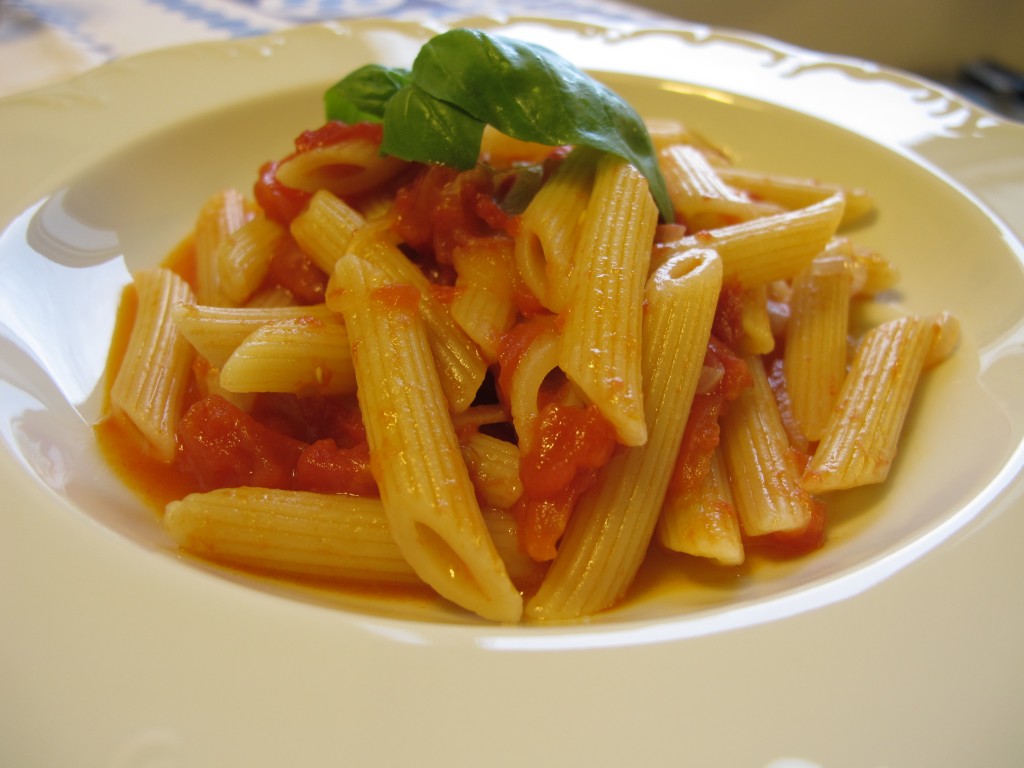
Many tourists in Italy make the fatal faux pas of ordering a cappuccino at the end of a meal, like after a pizza at lunchtime (a bit of a no-no in itself). A good waiter will swallow his pride and allow the tourist to swallow all that frothy milk on a full stomach, but as you have likely read elsewhere, it is considered a “rule” in Italy not to have a cappuccino after a certain hour.
After more than a decade of living in Italy, I can tell you that, despite its reputation for being a laid-back country, Italians follow a lot of rules … mostly centered on eating. And while outsiders can laugh about these rules, they seem to work: Italy is known worldwide for its great food, and Italians, in general, tend to be slim, attractive and enjoy particular longevity. You gotta figure they are doing something right. If you’re planning a trip to Italy, these reflections on the principles behind the Italian method of eating will help you better understand how to “eat like an Italian” during your visit … or even once you return home!
In an interesting article in The Florentine, Julie Butterfield says that Italians obsess about digestion. I can vouch for this. It’s a cultural issue you get both from watching TV and from hanging around with Italians. You’ll rarely see an advertisement for antacids, so common in North-American culture, but almost invisible in Italian pharmacies. Similarly, there are no fibre drinks that make you regular. But there are ads for yogurts that help your digestion, because it’s what you eat, not what supplements you take, that counts in this country.
What you eat, and how well you digest it, is an important topic of discussion. You may often hear people say they had trouble digesting something — the expression literally translating as “it has remained on my stomach,” with a hand gesture to accompany it that clearly demonstrates said food sitting too high in your digestive path.
On the order of food, Butterfield notes something I didn’t know, but which explains a lot:
In Medieval Europe, Galenic cooking was the dominant method used by Italian chefs, and it emphasized an order of eating. Easily digestible foods were to be eaten first, followed by heavier foods.
Consider the order of meals in Italy: the appetizer (optional), the primo (pasta, rice or other starch-based element), the secondo (meat or fish, with side of boiled or grilled vegetables, sometimes salad), fruit and then dessert. Incidentally, you don’t have to eat all of these parts of the meal in one sitting — that is mainly for special occasions. The starch is considered the easiest to digest. This is why they feed children pasta with tomato sauce. The meat comes afterward, harder to digest. For some reason, they put fruit in there afterwards, which most dieticians now discourage. Whether or not this order of food would work for you (you might find pasta indigestible, or follow a “food separation” diet for which this order would be unacceptable), this is the logic behind the structure of Italian eating, and understanding it helps understand all the rest.

In all this, it’s important to note the similarity to, yet difference from, the “food pyramid” eating method promoted in the Anglo-Saxon world. The food pyramid is a scientific way to count portions of food groups (starch, protein, fruit and vegetables). Let’s face it, there is nothing delicious about the food pyramid. Whereas all the elements that make up a full Italian meal end up being naturally balanced … and delicious!
The two most commonly mentioned “Italian food no-no’s” are (1) no cappuccino after 10 a.m. (or 11 a.m. — sources vary) and (2) no ordering pasta and pizza together. If you consider the above logic about food order and categories, you’ll see why these general rules hold true in Italy. Pasta and pizza both fall into the category of the “primo” or first course. Often they come down to pretty similar base ingredients. The logic here is not to double up on one food type, since you’ll end up lacking nutritional variety.

The cappuccino “rule” is rather more complex. It comes down to the digestibility of milk in large, warm volumes. Whether or not you’re lactose intolerant, milk is filling. A proper cappuccino is made with whole milk, so it’s also fattening. Many Italians will consider this frothy beverage “breakfast” with just a few cookies dunked in, or even alone. Some will tell you there is an hour after which you can’t have this milky coffee, but the logic is really meal-related. Consider a cappuccino like a snack between meals. Had alone, it’s okay. Consumed right after another meal, it’s considered bad for your digestion, while the short espresso is considered a digestive. As to if the tourist should or should not order a cappuccino after a meal, it’s really up to individual digestive ability. If you prefer to save face, you can always leave the restaurant and go to a bar for a cappuccino … nobody has to know.
Observe, learn and fit in, but not at the expense of your own pleasure. If you’ve read this far, you’ve learned a bit about Italy’s food culture — as much as can be explained in a short article. Now it’s up to you to decide which parts to “take home” from your travels, and which parts are best left to the Italians.

